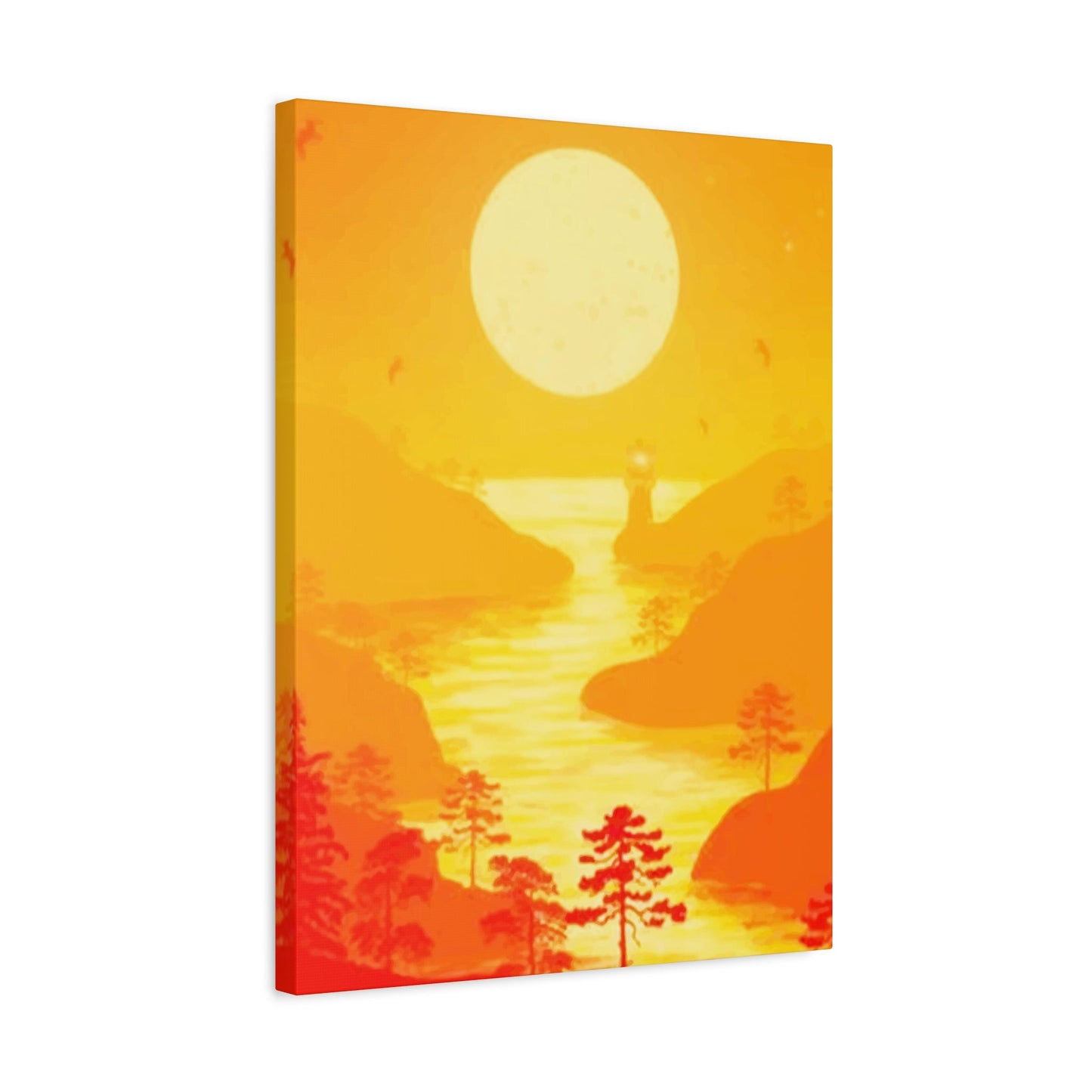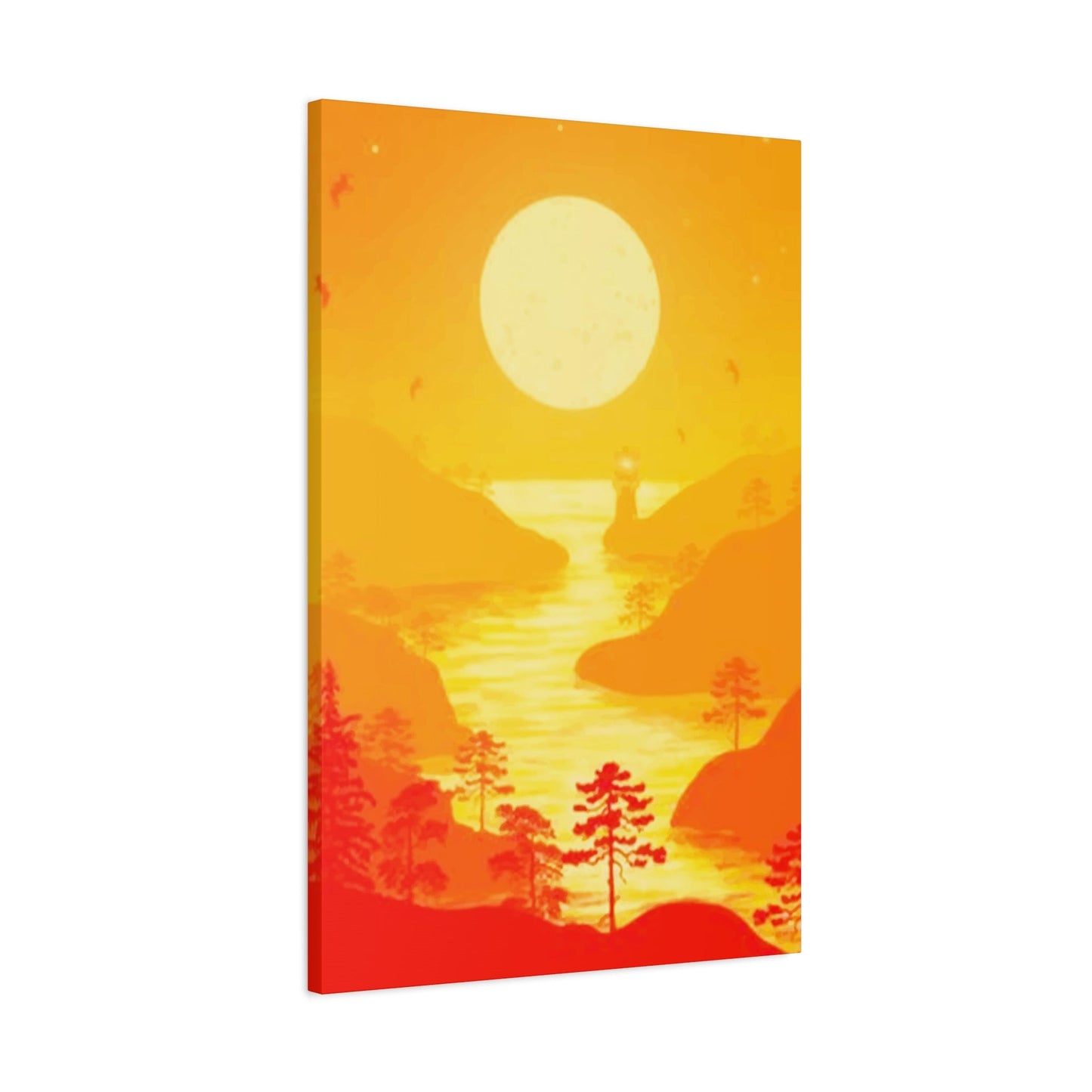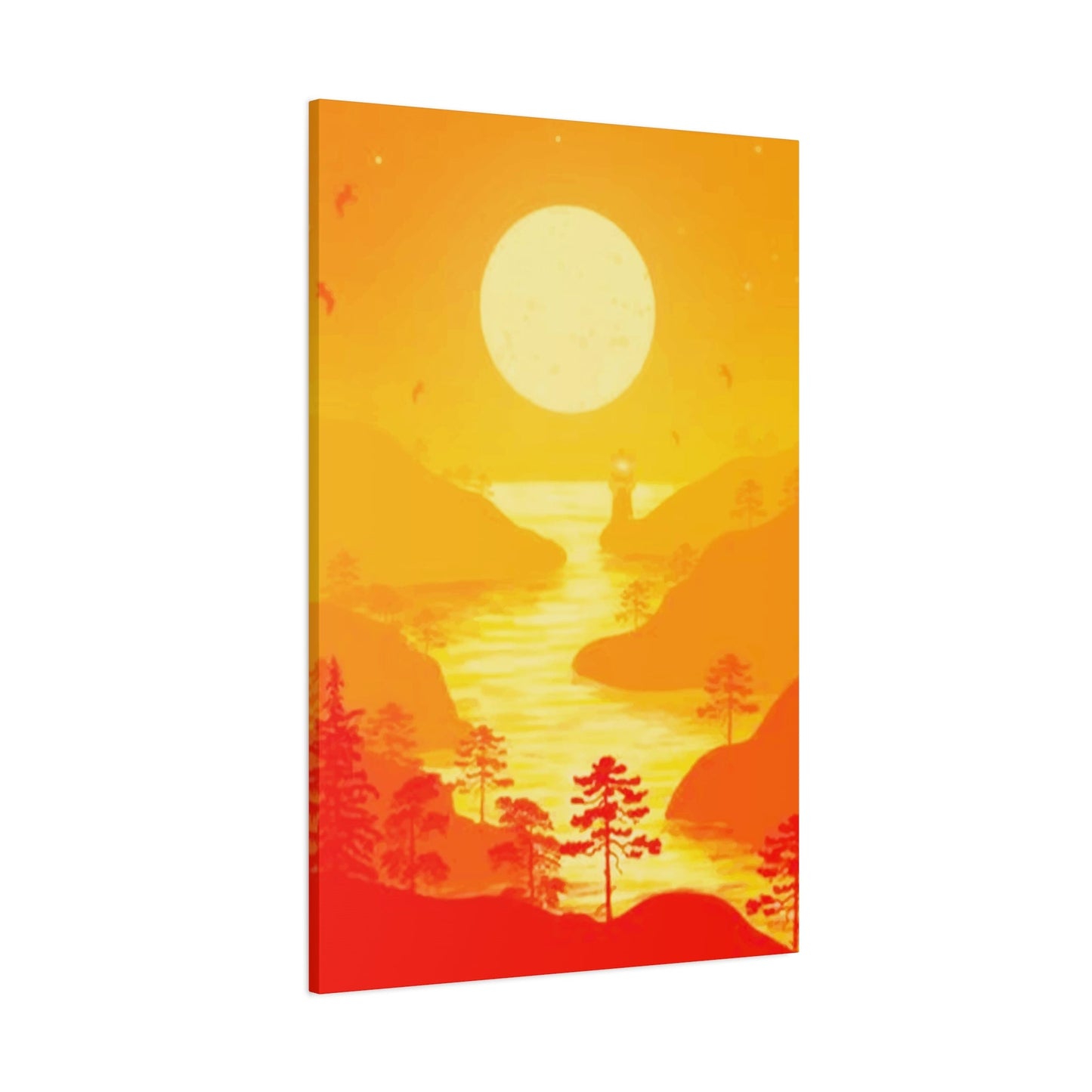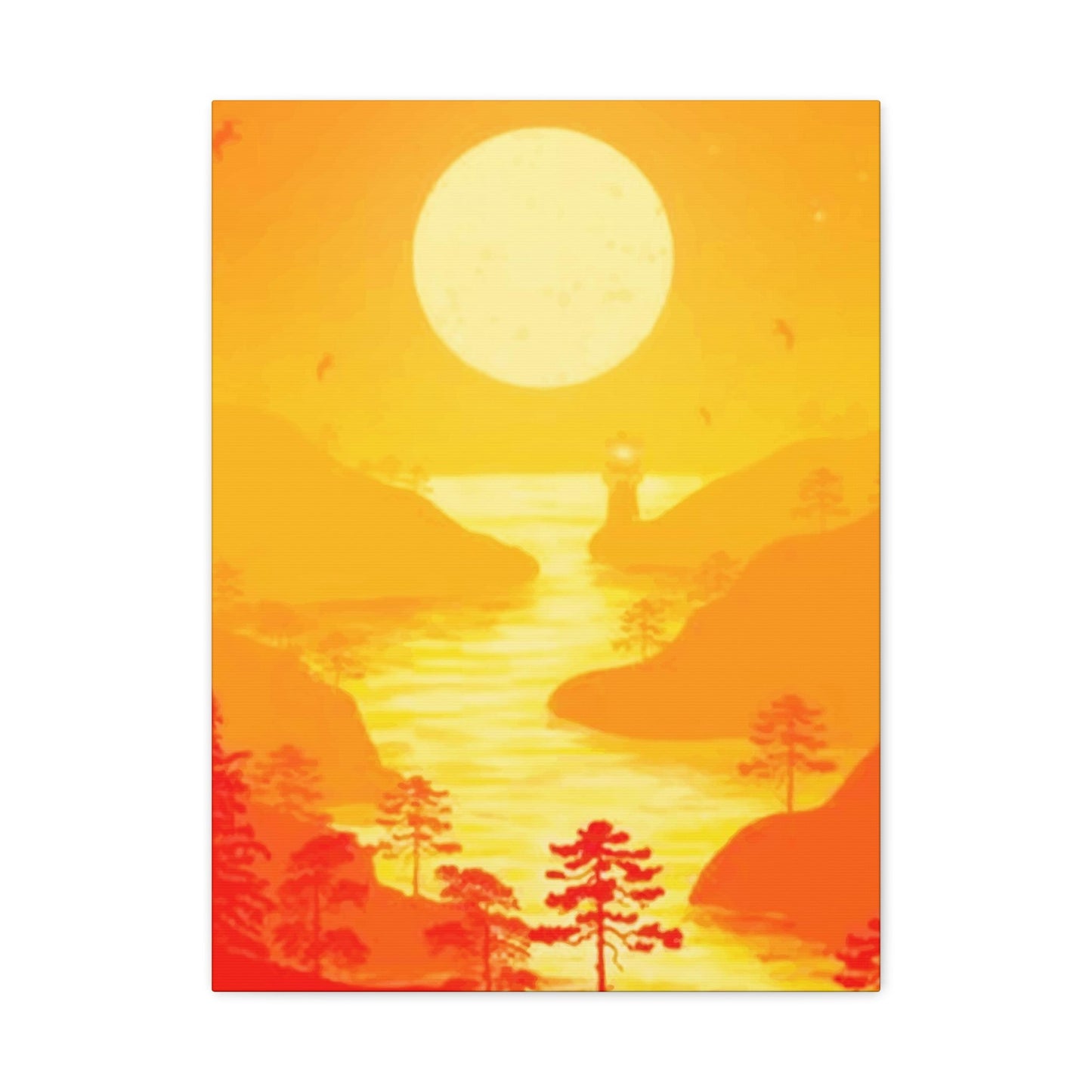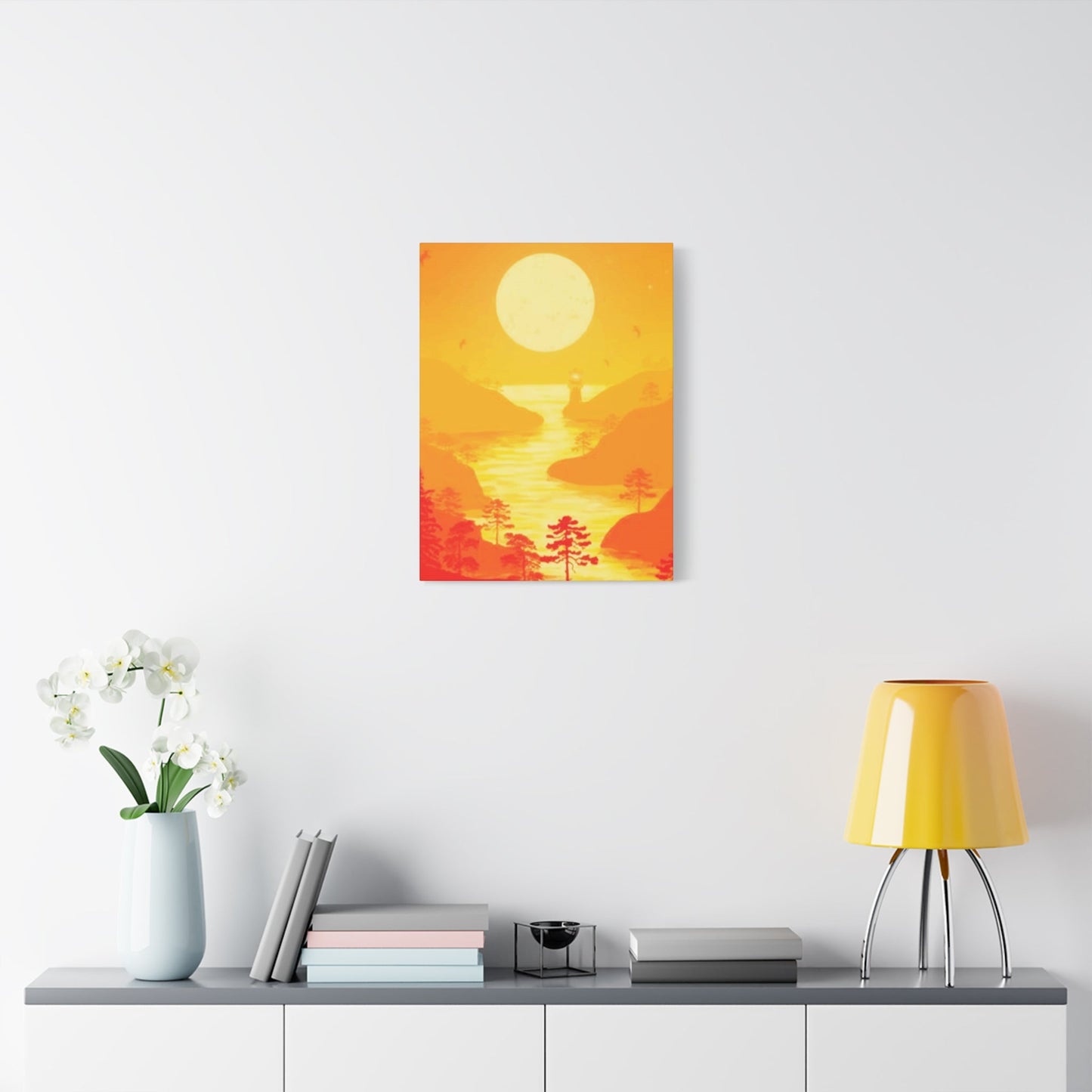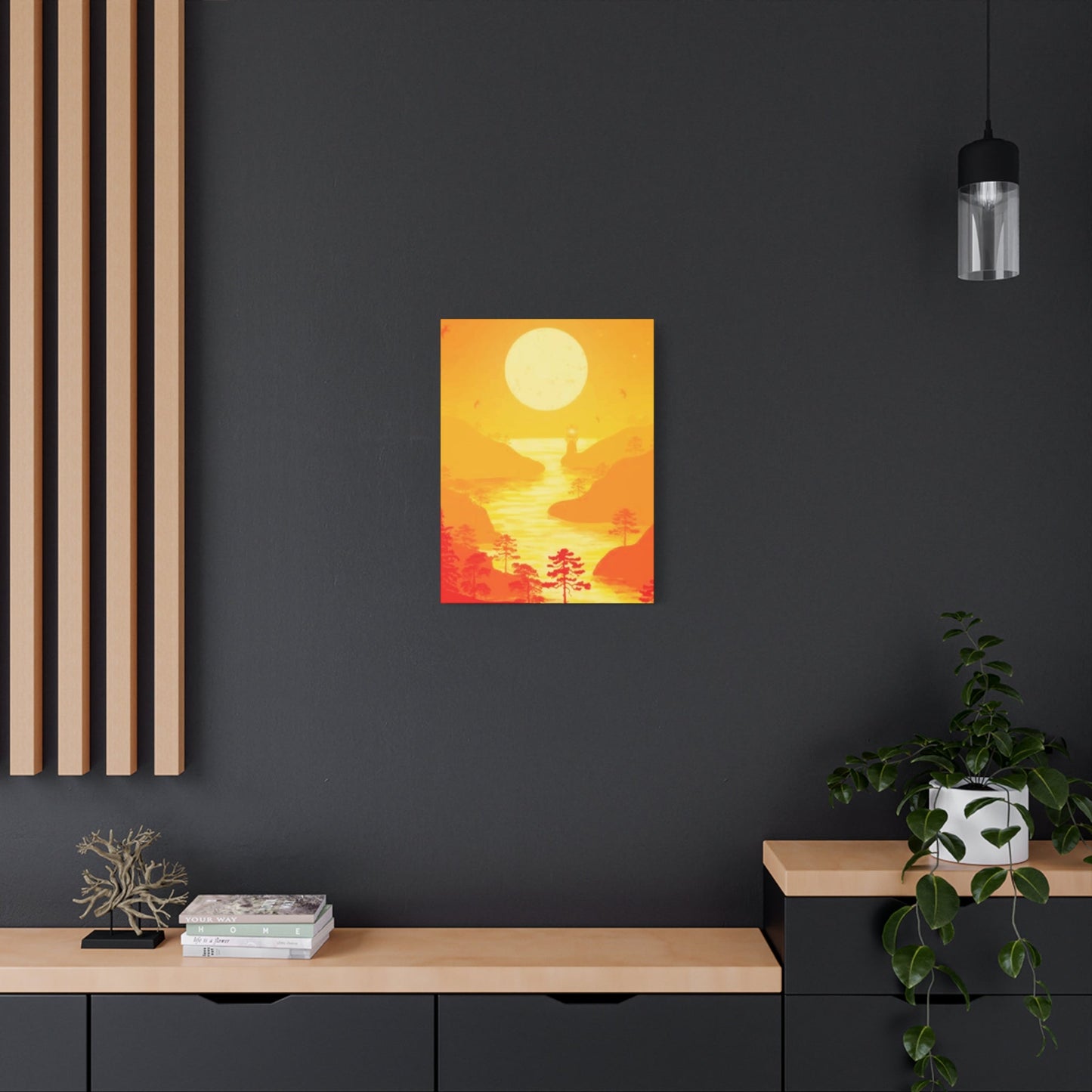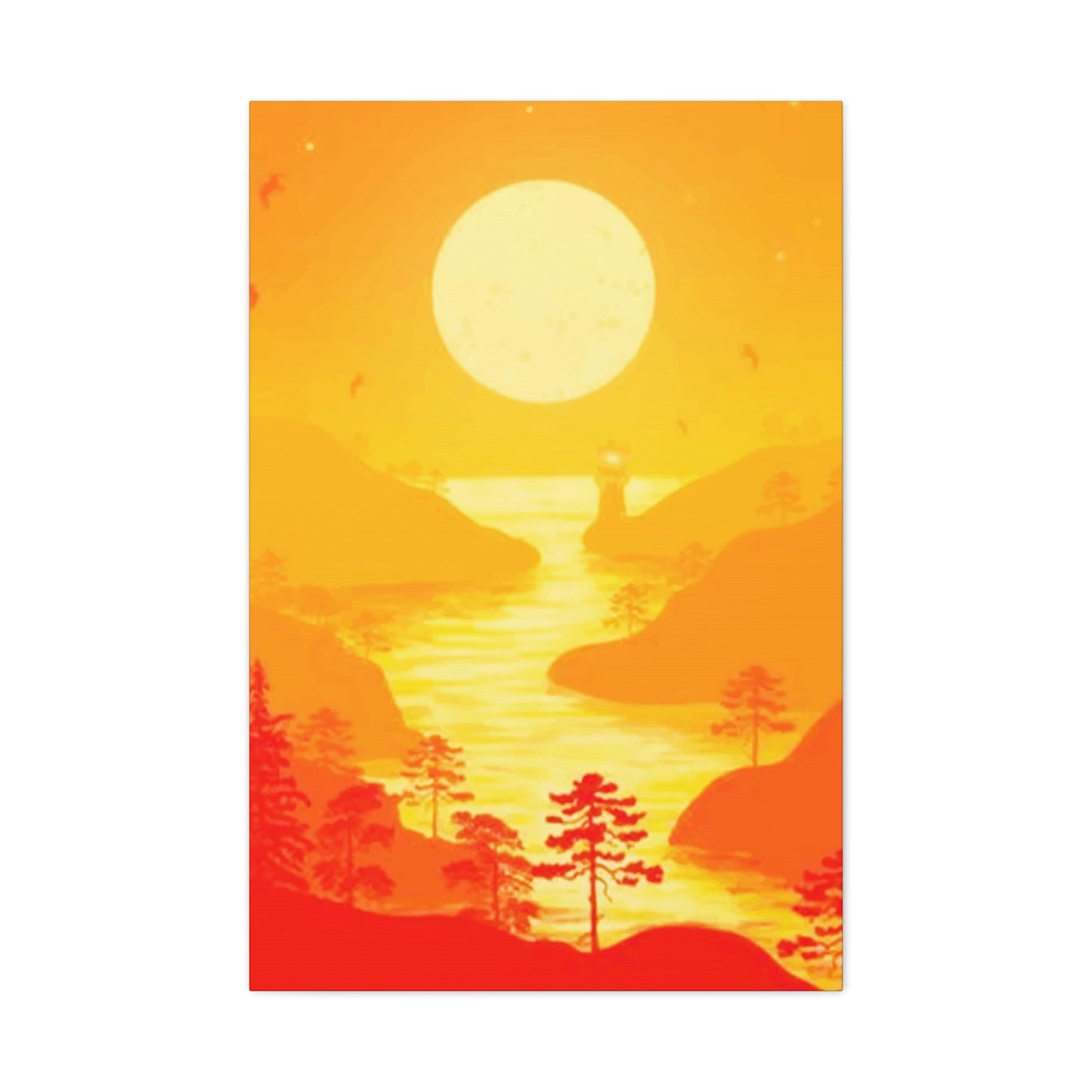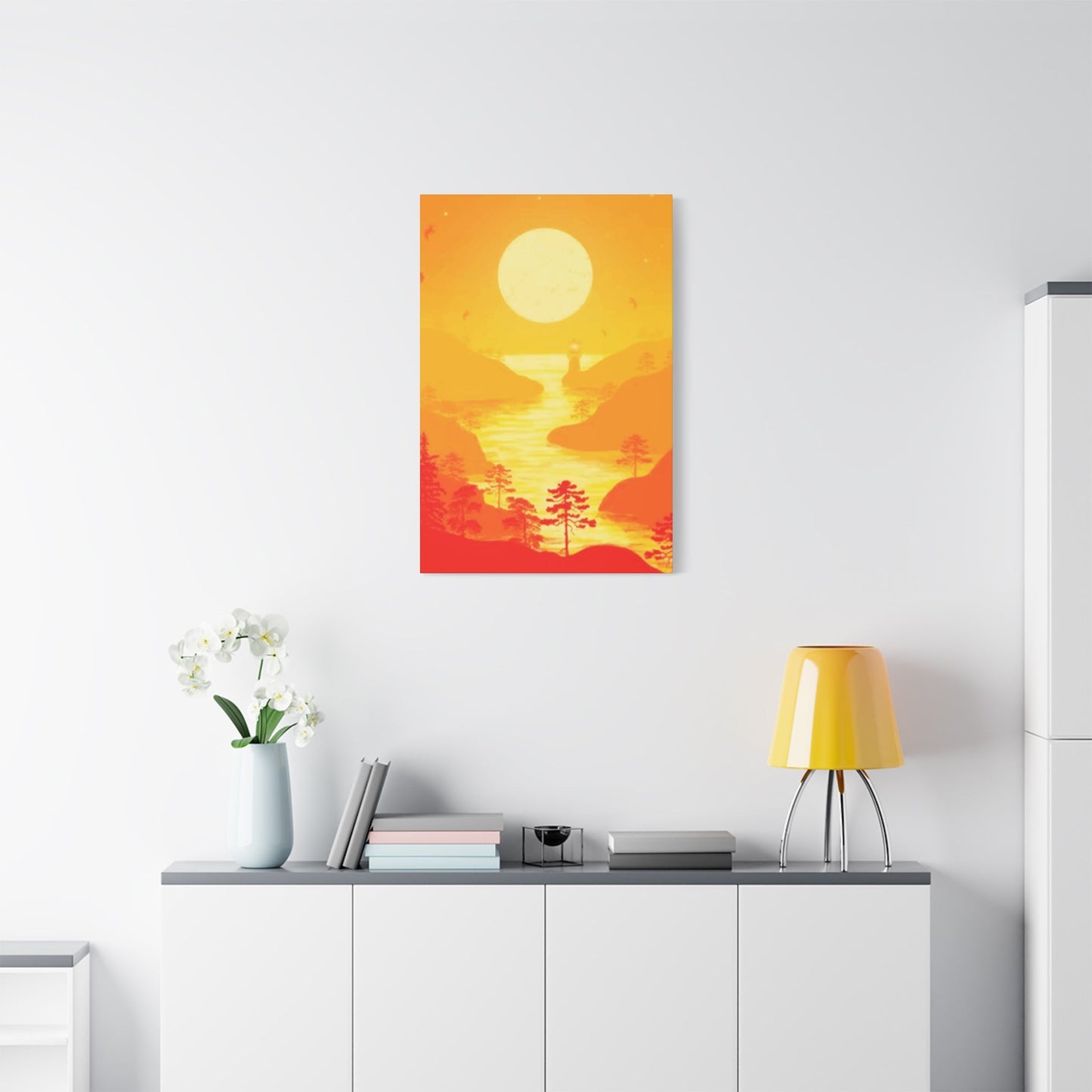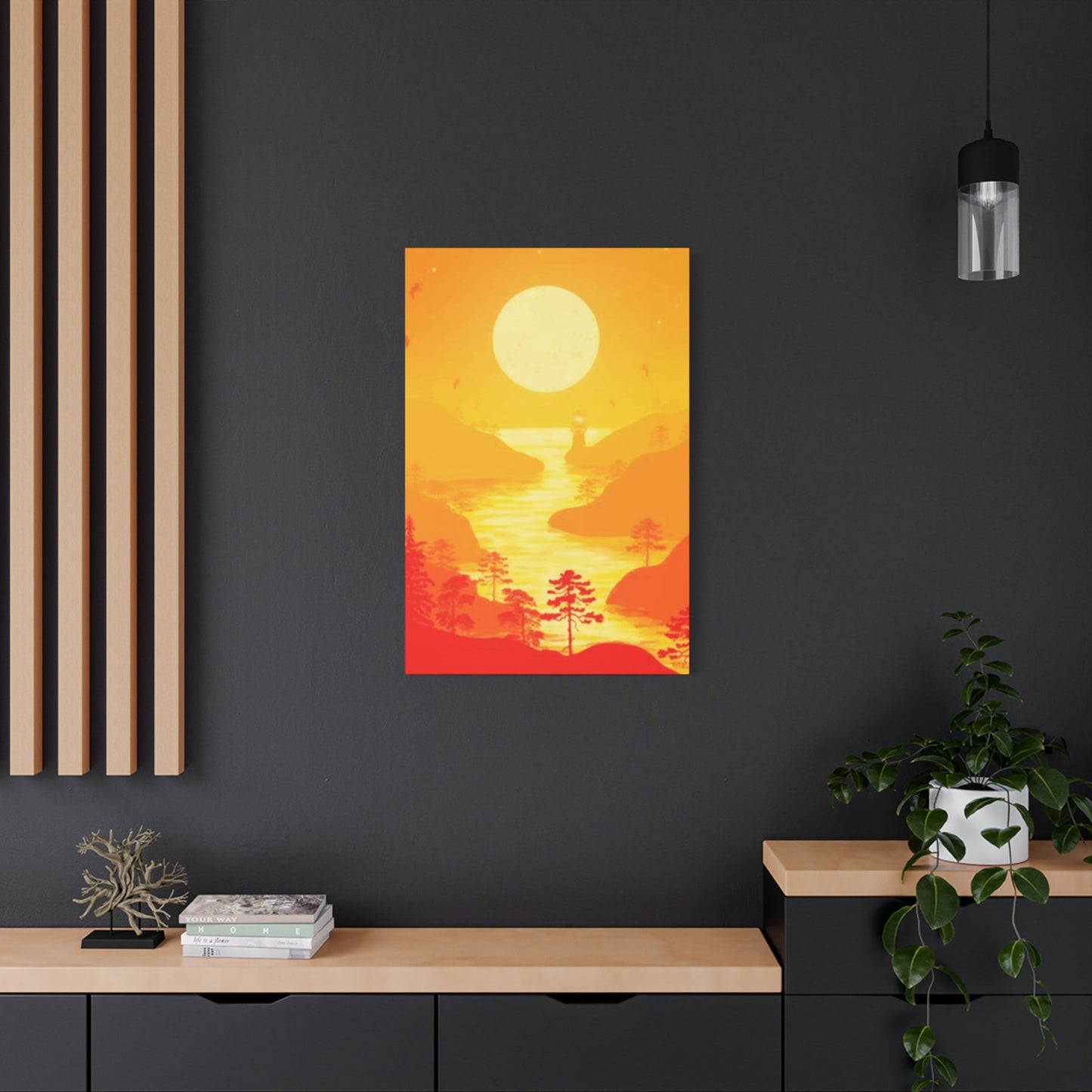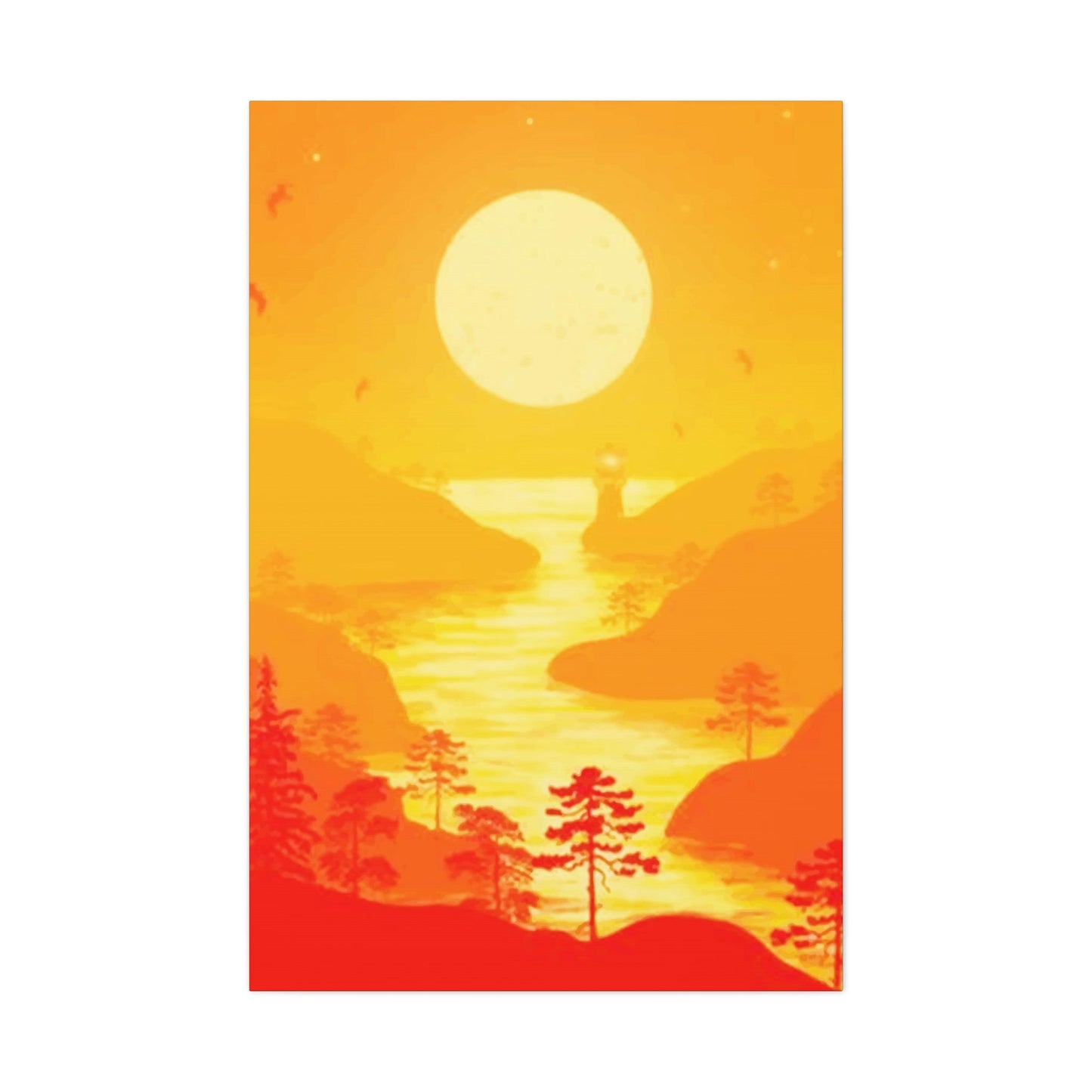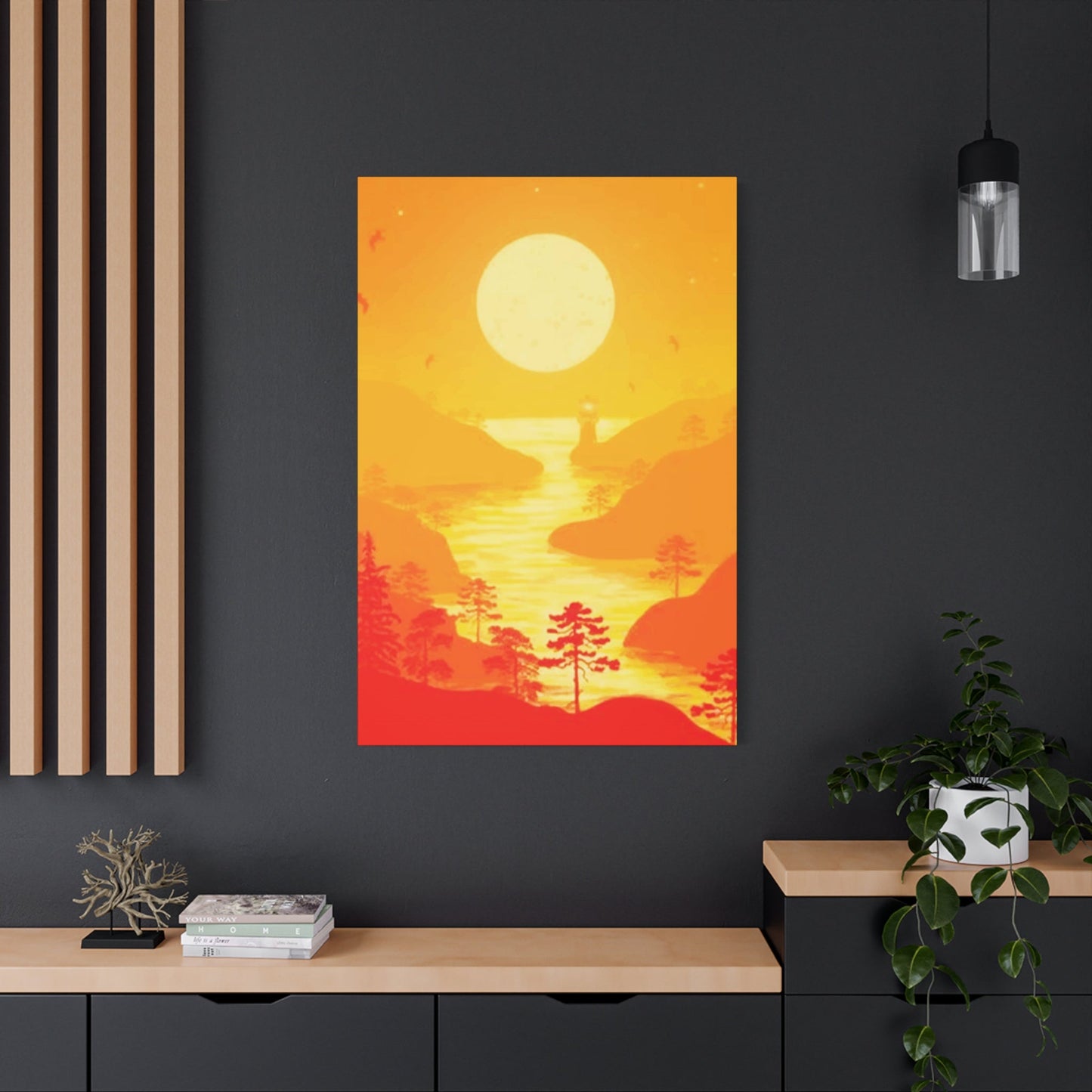Combining Textured Frames with Scenic Wall Art for Added Interest
Natural beauty has an extraordinary ability to transform any living environment into a sanctuary of peace and inspiration. When we incorporate Scenery wall art into our homes, we create visual gateways that transport us to breathtaking locations without ever leaving our comfortable surroundings. The human connection to nature runs deep, embedded in our very DNA through millennia of evolution spent in natural environments. This innate bond explains why Scenery landscapes have such a profound psychological impact on our wellbeing and emotional state.
Scenery wall art serves as more than mere decoration; it functions as a window to the natural world, offering daily doses of visual therapy that can reduce stress, lower blood pressure, and improve overall mental health. Research in environmental psychology consistently demonstrates that exposure to natural imagery, even in photograph or painted form, triggers the same relaxation responses as actual outdoor experiences. This phenomenon makes Scenery wall art an invaluable tool for creating healthier, more harmonious living environments.
The versatility of Scenery artwork allows homeowners to curate their own personal collection of favorite landscapes, from misty mountain ranges to pristine ocean shores. Each piece tells a story and evokes specific emotions, whether it's the adventurous spirit inspired by rugged wilderness scenes or the peaceful contemplation encouraged by gentle pastoral views. By carefully selecting Scenery wall art that resonates with personal experiences and aspirations, individuals can create meaningful connections between their living environments and their deepest values.
Contemporary homes often lack sufficient connection to the natural world, particularly in urban settings where concrete and steel dominate the landscape. Scenery wall art bridges this gap, bringing elements of the outdoors inside and creating balance between modern convenience and natural harmony. This integration doesn't require dramatic architectural changes or expensive renovations; simply hanging carefully chosen landscape artwork can dramatically shift the energy and atmosphere of any room.
Scenery Landscapes to Inspire Daily Living
Mountain landscapes possess an undeniable power to inspire and energize viewers with their dramatic peaks, sweeping valleys, and ever-changing weather patterns. These majestic formations represent strength, endurance, and the triumph of natural forces over time. When displayed as wall art, mountain scenes can motivate individuals to pursue their own peaks of achievement while providing a sense of perspective on daily challenges. The vertical lines and upward thrust of mountain compositions naturally draw the eye upward, creating a sense of aspiration and possibility.
Coastal scenes offer a different but equally compelling inspiration, with their endless horizons and rhythmic wave patterns suggesting both constancy and change. Ocean landscapes remind viewers of life's natural ebb and flow, encouraging acceptance of change while maintaining faith in underlying stability. The blues and greens typical of seascapes have proven calming effects on the nervous system, making these artworks particularly valuable in bedrooms, bathrooms, and other areas designated for relaxation and rejuvenation.
Forest imagery brings the mysterious and nurturing qualities of woodlands into domestic environments, creating feelings of shelter, growth, and renewal. The dappled light patterns characteristic of forest scenes add visual interest and movement to walls while evoking memories of peaceful walks through shaded groves. These artworks work particularly well in hallways, reading nooks, and other transitional areas where their contemplative qualities can be fully appreciated.
Desert landscapes, though less commonly chosen, offer unique inspirational qualities through their demonstration of life's resilience and adaptation. The warm earth tones and dramatic light contrasts found in desert scenes can energize viewers while teaching valuable lessons about perseverance and finding beauty in challenging circumstances. These artworks complement modern architectural styles particularly well, with their clean lines and bold compositional elements.
Prairie and meadow scenes celebrate the subtle beauty of open grasslands, teaching viewers to find joy in simplicity and appreciate the gentle rhythms of seasonal change. These landscapes often feature expansive skies that create feelings of freedom and possibility, while their horizontal compositions promote feelings of stability and groundedness. Such artworks excel in family rooms and kitchens where their welcoming, accessible beauty can be enjoyed by all household members.
Breathtaking Views in Artistic Expression
The translation of breathtaking natural views into artistic expression requires both technical skill and emotional sensitivity on the part of the artist. Master landscape painters understand that their role extends beyond mere documentation; they must capture the essence and emotional impact of spectacular scenery while adapting it for effective display in domestic settings. This artistic interpretation process often involves selective emphasis, color enhancement, and compositional adjustments that amplify the emotional resonance of the original scene.
Photography has revolutionized the accessibility of breathtaking landscape imagery, allowing homeowners to enjoy museum-quality reproductions of world-famous vistas at affordable prices. Modern printing technology can reproduce the subtle gradations and vibrant colors that make Scenery photography so compelling, ensuring that wall art maintains its visual impact even when viewed repeatedly over time. The documentary nature of photography also provides authenticity that appeals to viewers who want to know they're looking at actual places they might someday visit.
Digital art and mixed media approaches offer contemporary interpretations of classic landscape themes, often incorporating abstract elements that allow viewers to project their own experiences and emotions onto the artwork. These modern approaches can make traditional landscape subjects feel fresh and relevant to contemporary lifestyles, particularly appealing to younger homeowners who might otherwise find conventional landscape art outdated or overly sentimental.
The scale and presentation of breathtaking views requires careful consideration to maintain their impact in domestic settings. Large-format pieces can create immersive experiences that make viewers feel as though they're actually present in the depicted landscape, while smaller works might focus on intimate details that reveal the intricate beauty found within grand vistas. The key lies in matching the scale and intensity of the artwork to the intended viewing experience and room function.
Seasonal variations in landscape art allow homeowners to rotate their collections, maintaining visual interest while celebrating the cyclical nature of natural beauty. Spring scenes burst with fresh growth and vibrant colors, summer landscapes glow with warm light and lush vegetation, autumn views celebrate the spectacular color changes of deciduous trees, and winter scenes offer serene monochromatic beauty. This seasonal approach prevents visual monotony while keeping residents connected to natural rhythms throughout the year.
Calm and Serene Scenery Prints for Peaceful Homes
The pursuit of tranquility in modern life has made calm and serene scenery prints increasingly popular among homeowners seeking to create peaceful domestic environments. These artworks typically feature gentle compositions, muted color palettes, and harmonious elements that promote relaxation rather than excitement or stimulation. The psychological benefits of viewing serene imagery include reduced cortisol levels, lowered heart rate, and improved sleep quality, making these prints valuable investments in household wellness.
Lakeside scenes exemplify the calming power of still water reflections and peaceful shorelines. These compositions often incorporate symmetrical elements that create visual balance and psychological equilibrium, while the horizontal emphasis of water surfaces promotes feelings of stability and rest. The soft reflections and gentle ripples typical of lake scenes add subtle movement without creating visual agitation, making them ideal for bedrooms and meditation areas.
Pastoral meadows and rolling hills offer another category of serene landscape art, with their gentle curves and soft textures creating feelings of comfort and security. These scenes often include elements like grazing animals, distant farmhouses, or meandering streams that add narrative interest without disrupting the overall peaceful mood. The association with rural simplicity and slower-paced living makes pastoral scenes particularly appealing to urban dwellers seeking psychological escape from city stress.
Misty morning landscapes capture the ethereal quality of early daylight filtering through fog or low clouds, creating dreamlike atmospheres that encourage contemplation and introspection. The soft edges and muted contrasts characteristic of these scenes have a hypnotic quality that can help viewers achieve meditative states of mind. These artworks work particularly well in bathrooms and dressing areas where their gentle beauty can be appreciated during quiet morning routines.
Garden scenes bring the cultivated beauty of human-nature partnerships into home environments, suggesting both natural growth and careful tending. These compositions often feature winding paths, flowering borders, and shaded arbors that invite viewers to imagine themselves strolling through peaceful outdoor retreats. The combination of natural elements with subtle human touches makes garden artwork particularly suitable for dining rooms and kitchens where it reinforces connections between nature and nurturing.
Sunset and sunrise landscapes offer the ultimate in serene beauty, with their warm color gradations and symbolic associations with daily renewal and peaceful endings. These artworks can provide emotional anchoring for daily routines, offering moments of beauty and reflection that help maintain perspective on life's larger rhythms. The warm colors typical of golden hour lighting also create inviting atmospheres that make rooms feel more welcoming and comfortable.
Scenery Wall Art as Emotional Escape Routes
In our increasingly connected and fast-paced world, Scenery wall art provides invaluable opportunities for mental escape and emotional restoration. These visual journeys allow viewers to momentarily step away from immediate concerns and immerse themselves in idealized natural environments where stress and anxiety have no place. The psychological mechanism behind this escape involves the brain's tendency to process visual imagery as experiential information, triggering memories and associations that can shift emotional states almost instantly.
Adventure landscapes featuring dramatic cliffs, rushing waterfalls, or pristine wilderness areas can satisfy the human need for excitement and exploration even when physical adventure isn't possible. These artworks provide vicarious thrills and inspire viewers to dream about future outdoor experiences, maintaining connections to personal goals and aspirations. The dynamic compositions and bold contrasts typical of adventure scenes create visual energy that can motivate and energize viewers during challenging periods.
Tropical paradise scenes offer escape to warm, welcoming environments that represent the ultimate in relaxation and leisure. Palm-lined beaches, crystal-clear waters, and perpetual sunshine create fantasies of permanent vacation that can provide psychological relief during difficult seasons or circumstances. These artworks work particularly well in areas associated with relaxation and self-care, such as bathrooms, bedrooms, and spa-like retreats.
European countryside scenes transport viewers to romantic landscapes rich with cultural associations and historical depth. Rolling vineyards, ancient stone walls, and charming village views evoke dreams of slower-paced living and deeper connections to cultural traditions. These artworks appeal particularly to individuals with European heritage or those who aspire to travel abroad, providing daily reminders of personal goals and cultural interests.
Exotic wilderness areas introduce viewers to landscapes completely different from their everyday environments, expanding awareness of global natural diversity while providing mental stimulation through unfamiliar visual elements. African savannas, Asian rice terraces, or Arctic tundra scenes can broaden perspectives and encourage appreciation for the planet's incredible variety of ecosystems and natural beauty.
The therapeutic value of Scenery escape art has been recognized by healthcare professionals who increasingly recommend nature imagery for patients dealing with depression, anxiety, and chronic stress. The ability to visually visit peaceful, beautiful places provides psychological relief that can complement other therapeutic interventions, making Scenery wall art a valuable component of holistic wellness strategies.
Perfect Landscapes for Every Room
Selecting appropriate landscape artwork for specific rooms requires understanding both the functional requirements of each area and the psychological effects of different Scenery themes. The bedroom, as a sanctuary for rest and intimacy, benefits from gentle, dreamy landscapes that promote relaxation and peaceful sleep. Soft pastoral scenes, moonlit waters, or misty forests create appropriate atmospheres for this most private of home areas, while avoiding overly stimulating or dramatic imagery that might interfere with rest.
Living rooms serve as social gathering places where landscape art should create welcoming, conversation-friendly atmospheres. Scenes depicting accessible, inviting landscapes such as sunny meadows, comfortable woodland clearings, or friendly coastal areas encourage social interaction while providing pleasant visual focal points. The artwork in these areas should be engaging enough to capture attention without dominating conversations or creating visual competition with other room elements.
Dining areas benefit from landscape art that enhances the pleasure of shared meals and creates appetite-stimulating environments. Harvest scenes, vineyard landscapes, or Mediterranean coastal views can reinforce connections between food and natural abundance while creating sophisticated atmospheres appropriate for entertaining. The warm, earthy colors typical of agricultural landscapes complement most dining room color schemes while encouraging leisurely enjoyment of meals.
Home offices require landscape art that balances inspiration with focus, avoiding scenes so captivating that they become distracting during work tasks. Distant mountain views, serene lake scenes, or peaceful desert landscapes can provide mental refreshment during work breaks while maintaining the calm, purposeful atmosphere needed for concentration. The key lies in selecting scenes with enough visual interest to prevent monotony without creating overwhelming complexity.
Bathrooms offer unique opportunities for intimate landscape art that can be appreciated during private grooming and relaxation routines. Spa-like scenes featuring natural hot springs, tropical lagoons, or peaceful forest streams reinforce the bathroom's function as a personal retreat while creating luxurious atmospheres. The moisture resistance of modern printing methods makes it possible to enjoy beautiful landscape art even in these humid environments.
Kitchen environments benefit from cheerful, energizing landscape art that celebrates natural abundance and outdoor living. Market garden scenes, orchard landscapes, or sunny outdoor dining areas can reinforce the kitchen's role as the heart of home life while inspiring healthy cooking and eating habits. These artworks should complement the active, social nature of kitchen environments without creating visual clutter that interferes with food preparation tasks.
Hallways and transitional areas offer opportunities for dramatic landscape art that can be appreciated in passing while creating visual interest in otherwise utilitarian locations. Bold mountain vistas, dramatic coastal scenes, or exotic wilderness areas can transform boring corridors into gallery-like experiences that add value and beauty to the entire home. These locations can accommodate larger, more dramatic pieces that might overwhelm smaller, more intimate rooms.
Art That Captures Nature's Essence
The most effective landscape art goes beyond superficial beauty to capture the essential character and emotional resonance of natural environments. This deeper artistic achievement requires understanding not just what natural places look like, but how they feel, sound, and even smell to visitors who experience them directly. Master landscape artists develop this understanding through extensive field work, careful observation, and deep personal connections to the environments they depict.
The play of light remains one of the most crucial elements in capturing nature's essence, as lighting conditions determine mood, atmosphere, and emotional impact more than any other single factor. Golden hour lighting creates warmth and romance, overcast conditions suggest mystery and introspection, harsh midday sun emphasizes drama and intensity, while soft dawn light promotes hope and renewal. Successful landscape art reproduces these lighting effects in ways that trigger appropriate emotional responses in viewers.
Weather conditions add another layer of authenticity to landscape art, helping viewers connect with the dynamic, ever-changing nature of outdoor environments. Storm clouds gathering over mountain peaks, morning mist rising from valley floors, or snow beginning to dust autumn foliage all suggest the temporal nature of outdoor experiences while creating visual drama that holds viewer attention.
Seasonal indicators help landscape art feel connected to natural cycles and rhythms, making static artworks feel alive and dynamic. Spring's tender green shoots, summer's lush vegetation, autumn's spectacular color changes, and winter's stark simplicity all carry emotional associations that can enhance the psychological impact of landscape art. Artists who successfully capture these seasonal qualities create works that remain visually interesting throughout the year.
Wildlife elements, when included judiciously, can bring landscape art to life while creating narrative interest that engages viewers' imaginations. A soaring eagle over mountain peaks, deer grazing in meadow clearings, or seabirds following coastal waves all suggest the vibrant ecosystems that make natural places truly alive. These elements must be integrated naturally into compositions rather than appearing as afterthoughts or forced additions.
The scale relationships within landscape compositions help viewers understand their place within natural environments, whether as tiny figures dwarfed by mountain grandeur or as comfortable observers of intimate garden scenes. These scale relationships can profoundly affect the emotional impact of landscape art, creating feelings ranging from awe and humility to comfort and security.
Scenery Vistas on Canvas
Canvas remains the preferred medium for many landscape artists due to its texture, durability, and ability to hold both subtle details and broad color areas effectively. The traditional association between canvas and fine art also lends prestige and cultural weight to landscape paintings that other media might not achieve. Modern canvas preparation techniques ensure longevity while maintaining the organic feel that complements natural subject matter so effectively.
Oil painting techniques allow for the richest color saturation and most subtle blending effects, making them ideal for capturing the complex color relationships found in natural lighting conditions. The slow drying time of oil paints enables artists to work wet-into-wet, creating the soft atmospheric effects that make landscape art so emotionally compelling. Master oil painters can achieve luminous effects that seem to glow from within, mimicking the way natural light behaves in outdoor environments.
Acrylic painting offers faster working times and easier cleanup while still providing excellent color range and blending capabilities. Modern acrylic formulations can achieve effects nearly indistinguishable from oil paintings while offering superior fade resistance and color stability over time. This medium works particularly well for contemporary interpretations of landscape themes that incorporate bold color choices and simplified compositional elements.
Watercolor landscape art captures the ethereal, spontaneous quality of natural phenomena like clouds, mist, and flowing water through transparent color applications and controlled accident effects. The unpredictable nature of watercolor media mirrors the unpredictable beauty of natural environments, creating authentic-feeling artworks that celebrate both artistic skill and natural spontaneity. These works often feel fresh and immediate, as if captured in a moment of inspiration.
Mixed media approaches allow artists to incorporate texture elements, collage materials, and unconventional tools that can enhance the tactile qualities of landscape art. Sand, shells, pressed flowers, or textured papers can add physical dimension that makes viewers want to reach out and touch the artwork, creating more engaging and memorable visual experiences.
Digital printing on canvas has democratized access to high-quality landscape art while enabling artists to reach broader audiences with their work. Modern printing techniques can reproduce subtle color gradations and fine details with remarkable fidelity, making it possible for homeowners to enjoy museum-quality landscape art at accessible price points. The canvas texture adds authenticity and visual interest that flat paper prints cannot match.
Nature-Inspired Home Decoration Philosophy
Creating a cohesive approach to nature-inspired home decoration requires understanding the deeper principles that make natural environments so universally appealing and psychologically beneficial. Natural environments achieve visual harmony through color relationships, proportional systems, and organizational principles that have evolved over millions of years to create optimal conditions for life and growth. These same principles can guide homeowners in creating living environments that feel as naturally balanced and harmonious as favorite outdoor locations.
Color harmony in natural environments results from the limited palette of earth tones, sky blues, and vegetation greens that predominate in most landscapes. These colors have evolved together and naturally complement each other, creating the pleasing visual relationships that make natural scenes so restful and appealing. Home decoration schemes based on these natural color relationships tend to feel more comfortable and less artificial than designs based on purely aesthetic or fashion considerations.
Proportional relationships found in natural environments, such as the golden ratio observed in shell spirals and flower petals, can guide the sizing and placement of furniture, artwork, and decorative elements. These mathematical relationships, refined through evolutionary processes, trigger positive psychological responses and create visual arrangements that feel inherently correct and pleasing to human observers.
Textural variety in natural environments ranges from smooth water surfaces to rough tree bark, from soft moss to hard stone, creating rich sensory experiences that engage multiple aspects of human perception. Home environments that incorporate similar textural variety through appropriate material choices and surface treatments feel more alive and engaging than spaces that rely solely on visual stimulation.
Natural lighting patterns change throughout the day and seasons, creating dynamic environments that maintain visual interest while supporting human circadian rhythms. Home decoration schemes that acknowledge and enhance these natural lighting changes through window treatments, artificial lighting choices, and reflective surfaces create healthier, more comfortable living environments.
The principle of organic growth suggests that successful home decoration evolves gradually over time rather than being imposed all at once through comprehensive redesign projects. Like natural environments, homes feel most authentic when they develop through accumulated choices that reflect the inhabitants' experiences, preferences, and changing needs over time.
Scenery Escapes Through Artistic Vision
The concept of Scenery escape through art recognition the human need for psychological retreat and renewal, particularly in urban environments where natural beauty may be scarce or inaccessible. Landscape art functions as a portal to imagined experiences, allowing viewers to briefly inhabit idealized natural environments where stress and anxiety dissolve into peaceful contemplation. This escapist function of art has been recognized and celebrated throughout human history, from ancient Roman villa frescoes depicting idyllic gardens to contemporary photographic prints showcasing exotic wilderness areas.
Fantasy landscapes push the boundaries of realistic representation, creating idealized natural environments that may not exist in reality but fulfill deep psychological needs for perfect natural refuges. These artworks might combine elements from multiple actual locations, enhance colors beyond natural ranges, or eliminate distracting elements that would detract from the pure escapist experience. While not documentarily accurate, these fantasy landscapes can provide more effective psychological relief than strictly realistic depictions.
Nostalgic landscapes tap into personal and cultural memories of idealized natural experiences, often depicting rural scenes from earlier eras when life supposedly moved at a slower pace and human-nature relationships were more direct and meaningful. These artworks provide escape not just from urban environments but from the pressures and complexities of contemporary life, offering visual reminders of simpler times and more direct relationships with natural cycles.
Exotic locations introduce viewers to landscapes completely outside their personal experience, providing escape through novelty and wonder rather than familiarity and comfort. African savannas, Asian mountain ranges, Arctic wilderness areas, or tropical island paradises can expand mental horizons while providing relief from the predictable visual patterns of daily environments. These artworks feed the human need for adventure and exploration even when actual travel isn't possible.
Seasonal escape art allows viewers to mentally visit favorite times of year regardless of current weather conditions, providing psychological relief during difficult seasons. Snow scenes can provide cooling mental relief during hot summer months, while warm autumn or spring landscapes can offer hope and beauty during dreary winter periods. This temporal escape function helps maintain emotional equilibrium throughout the year's natural cycles.
Mood-responsive landscape art selection enables homeowners to choose Scenery escapes that complement or counterbalance current emotional states, using visual beauty as a tool for psychological self-regulation. Energizing mountain scenes might provide motivation during lethargic periods, while gentle meadow views could offer calming influence during stressful times. This therapeutic approach to art selection acknowledges the powerful influence visual environments have on mental and emotional wellbeing.
Captivating Outdoor Scenes for Modern Living
Contemporary lifestyle demands have created new requirements for landscape art that must compete with digital entertainment, busy schedules, and shortened attention spans while still providing the psychological benefits that natural imagery has always offered. Modern captivating outdoor scenes often incorporate bold compositional elements, enhanced color relationships, and dynamic visual movement that can hold viewer attention in environments filled with competing stimuli.
Urban wilderness scenes acknowledge the reality that most contemporary viewers live in cities while still craving connections to natural environments. These artworks might depict natural areas adjacent to urban centers, showing how wilderness can coexist with modern development, or they might focus on the surprising natural elements that persist within city environments such as parks, gardens, and street trees.
Adventure sports landscapes capture the excitement of human interaction with dramatic natural environments, appealing to viewers who associate outdoor experiences with physical challenge and achievement. Rock climbing scenes, whitewater kayaking, mountain biking, or skiing imagery can provide vicarious thrills while inspiring viewers to pursue their own outdoor adventures. These dynamic compositions often feature dramatic angles and bold contrasts that create visual excitement.
Sustainable landscape art celebrates environmental conservation and renewable energy integration, showing how human technology can work harmoniously with natural systems. Wind farms in rolling hills, solar installations in desert settings, or restored wetlands can inspire environmental awareness while providing beautiful imagery that appeals to environmentally conscious viewers.
Minimalist landscape interpretations reduce complex natural scenes to essential elements, creating contemporary artworks that complement modern architectural styles while maintaining connections to natural beauty. These simplified compositions might focus on single elements like a perfect wave, an isolated tree, or geometric rock formations, creating visual statements that work well in contemporary minimalist home environments.
Technology-enhanced landscape art incorporates digital manipulation, composite imagery, or artistic interpretation that creates landscapes more perfect than reality, appealing to viewers accustomed to the enhanced imagery prevalent in contemporary media. These works might combine multiple locations, adjust lighting for optimal effect, or eliminate distracting elements to create idealized natural scenes that provide maximum psychological benefit.
Serene Landscapes for Creating Peaceful Homes
The intentional creation of peaceful home environments requires careful selection of landscape art that actively promotes relaxation, reduces stress, and supports mental restoration. Serene landscape imagery works by triggering physiological responses that counteract the effects of chronic stress, including lowered heart rate, reduced muscle tension, and decreased production of stress hormones. These biological responses explain why certain types of landscape art are more effective than others at creating genuinely peaceful domestic environments.
Horizontal compositional elements naturally promote feelings of stability and rest, making lakeshores, prairie vistas, and ocean horizons particularly effective for peaceful environments. The eye's tendency to follow horizontal lines creates a scanning motion that mimics the relaxed visual patterns associated with restful states, while vertical elements can create tension and alertness that may interfere with relaxation goals.
Soft color palettes dominated by cool blues, gentle greens, and warm earth tones create visual atmospheres that support psychological calm while avoiding the stimulating effects of bright, contrasting colors. These natural color relationships have been proven to reduce stress responses while promoting the meditative states that support mental restoration and emotional healing.
Water elements in landscape art provide multiple pathways to peaceful responses, from the visual appeal of reflective surfaces to the psychological associations with cleansing, renewal, and life-giving properties. Still water scenes promote contemplation and introspection, while gently moving water suggests natural rhythms and cycles that can help viewers reconnect with their own internal rhythms often disrupted by artificial schedules and electronic stimulation.
Natural lighting effects captured in serene landscape art can influence circadian rhythms and sleep quality, particularly when viewed during evening hours as part of bedtime routines. Sunset scenes, twilight atmospheres, and soft dawn lighting all signal the brain to begin relaxation processes that support healthy sleep cycles, making appropriately chosen landscape art a valuable component of sleep hygiene practices.
Scale relationships that place viewers in comfortable, non-threatening positions within landscape scenes promote feelings of security and belonging rather than awe or intimidation. Intimate garden views, accessible meadow scenes, or welcoming forest clearings create psychological environments where viewers feel safe to relax rather than alert to potential challenges or dangers.
Scenery Beauty in Every Brushstroke Technique
The artistic techniques used to create landscape art significantly impact its ability to convey natural beauty and emotional resonance. Master landscape artists understand that each brushstroke contributes to the overall atmosphere and psychological effect of the finished work, requiring deliberate choices about mark-making, color application, and compositional development that align with the intended emotional message.
Atmospheric perspective techniques create depth and spatial relationships that make two-dimensional artworks feel three-dimensional and immersive. By gradually lightening values and reducing color intensity with distance, artists can create convincing illusions of vast spaces that allow viewers to mentally enter and explore depicted landscapes. This technique is particularly important for creating the sense of escape and immersion that makes landscape art psychologically effective.
Color temperature relationships between warm and cool tones create emotional undertones that can dramatically affect viewer responses to landscape art. Warm colors advance visually and create feelings of energy and welcome, while cool colors recede and promote calm contemplation. Skilled artists manipulate these temperature relationships to guide viewer attention and create desired emotional responses.
Brushwork texture adds tactile qualities that make landscape art more engaging and memorable, creating surfaces that viewers want to examine closely and even touch. Varied brushwork can simulate natural textures like rough bark, smooth water, soft grass, or weathered stone, adding authenticity and sensory appeal that enhances the illusion of reality.
Edge quality control determines how forms relate to each other within landscape compositions, affecting both visual clarity and emotional impact. Hard edges create definition and focus attention, while soft edges suggest atmospheric effects and promote gentle, contemplative viewing experiences. The strategic use of both edge types creates visual hierarchies that guide viewer attention through landscape compositions.
Value relationships between light and dark areas create the dramatic contrasts that make landscape art visually compelling while establishing mood and atmosphere. High contrast scenes feel dramatic and energetic, while low contrast works promote calm and gentle responses. Understanding how to manipulate value relationships allows artists to create landscape art that matches intended psychological effects.
Color harmony principles ensure that landscape art feels visually coherent and pleasant to observe over extended periods, avoiding color combinations that create visual tension or fatigue. Natural landscape scenes provide excellent models for harmonious color relationships, as evolutionary processes have refined these combinations to be maximally appealing to human perception.
Landscape Art for Contemporary Home Styling
Modern home styling approaches require landscape art that complements contemporary architectural elements while maintaining the timeless appeal that makes natural imagery universally relevant. Contemporary landscape art often features simplified compositions, bold color choices, and graphic elements that work well with clean lines and minimalist décor principles while still providing the psychological benefits associated with natural imagery.
Large format landscape art makes dramatic statements in contemporary homes where spacious walls and open floor plans can accommodate oversized artworks. These impressive pieces can serve as focal points that anchor entire room compositions while providing immersive viewing experiences that transport inhabitants to favorite natural environments. The scale impact of large landscape art can transform ordinary rooms into impressive galleries.
Photographic landscape art offers documentary authenticity that appeals to contemporary viewers who value truth and transparency in their aesthetic choices. High-quality landscape photography can capture details and color relationships impossible to achieve through traditional painting techniques, while modern printing methods ensure longevity and color accuracy that rivals original artworks.
Abstract landscape interpretations reduce natural scenes to essential elements of color, form, and composition, creating artworks that suggest natural environments without literal representation. These works appeal to viewers who want connections to nature without traditional representational art, allowing personal interpretation while maintaining landscape themes and emotional associations.
Black and white landscape art provides sophisticated alternatives to color works, emphasizing compositional strength and tonal relationships over chromatic appeal. Monochromatic landscape art works particularly well in contemporary environments where color palettes are restricted or where dramatic visual statements are preferred over subtle color harmonies.
Series installations allow homeowners to create gallery-like displays of related landscape images, telling visual stories or exploring themes through multiple related artworks. Seasonal series, geographic explorations, or technical variations on landscape themes can create more complex and engaging visual experiences than single artworks while maintaining design coherence.
Mixed media landscape art incorporates unconventional materials and techniques that add textural interest and contemporary relevance to traditional landscape themes. These works might combine painting with photography, incorporate found natural materials, or use digital manipulation to create hybrid artworks that bridge traditional and contemporary aesthetic approaches.
Bringing Natural Elements Into Living Areas
The successful integration of natural elements through landscape art requires understanding how visual representations of nature can complement and enhance physical natural elements within home environments. This holistic approach creates layered connections to the natural world that are more psychologically satisfying than either approach used independently, building comprehensive nature-inspired environments that support wellbeing and happiness.
Plant life coordination involves selecting landscape art that complements existing houseplants and garden views, creating visual continuity between living natural elements and artistic representations. Woodland landscape art works beautifully with fern collections, desert scenes complement succulent arrangements, and coastal imagery enhances homes with tropical plant collections. This coordination creates coherent natural themes throughout living areas.
Natural material partnerships pair landscape art with furniture and decorative elements made from wood, stone, metal, and fiber materials that echo the natural elements depicted in the artwork. Rough-hewn wooden frames complement rustic landscape scenes, while sleek metal presentations work well with contemporary interpretations of natural themes. These material relationships strengthen the overall natural feeling of home environments.
Lighting design considerations ensure that landscape art is properly illuminated to showcase natural beauty while creating appropriate ambient lighting for different activities and times of day. Natural lighting changes throughout the day should be considered when positioning landscape art, while artificial lighting can be designed to enhance the mood and atmosphere depicted in natural scenes.
Seasonal rotation strategies allow homeowners to change their landscape art collections throughout the year, maintaining visual interest while staying connected to natural cycles and rhythms. Storage solutions and hanging systems that facilitate easy artwork changes enable this seasonal approach while protecting valuable artworks during off-display periods.
Outdoor view integration positions landscape art to complement or enhance actual outdoor views from windows and doors, creating seamless transitions between indoor and outdoor environments. Strategic placement can extend apparent room boundaries while maintaining visual connections to actual natural environments visible from the home.
Natural fragrance coordination uses scented candles, diffusers, or potpourri with fragrances that complement the natural environments depicted in landscape art, creating multi-sensory experiences that enhance the psychological impact of visual nature connections. Forest scenes might be enhanced with pine or cedar scents, while coastal art could be complemented with ocean breeze fragrances.
Timeless Views on Canvas Appeal
The concept of timeless landscape art recognizes that certain natural scenes and artistic approaches transcend temporary fashion trends, maintaining their appeal and relevance across generations and changing aesthetic preferences. These enduring works share characteristics that tap into fundamental human responses to natural beauty, ensuring their continued relevance regardless of contemporary decorating styles or cultural shifts.
Classical composition principles derived from centuries of artistic tradition create landscape art that feels inherently balanced and pleasing, drawing upon mathematical relationships and visual hierarchies that have proven their effectiveness over time. The rule of thirds, golden ratio proportions, and traditional foreground-middleground-background relationships create compositions that remain satisfying to view repeatedly over extended periods.
Universal natural themes such as mountains, water, forests, and skies appeal to shared human experiences and genetic memories that transcend cultural boundaries and personal preferences. These elemental landscape subjects trigger deep psychological responses that remain consistent across different viewers and historical periods, ensuring broad and lasting appeal for landscape art featuring these themes.
Quality craftsmanship in landscape art creation ensures physical longevity that allows artworks to develop patina and character over time rather than deteriorating or becoming dated. Professional materials, proper preparation techniques, and skilled execution create artworks that can be treasured across generations, developing sentimental value that enhances their aesthetic appeal.
Emotional authenticity in landscape art results from artists' genuine connections to the natural environments they depict, creating works that communicate sincere feelings and experiences rather than superficial prettiness. This authenticity resonates with viewers across time periods, as genuine emotion remains recognizable and moving regardless of changing artistic styles or cultural contexts.
Technical excellence in color relationships, compositional balance, and representational skill creates landscape art that rewards close examination and repeated viewing, revealing new details and subtleties that maintain interest over time. These technical qualities separate lasting artworks from temporary decorative pieces that may initially appeal but fail to sustain long-term appreciation.
Investment value potential makes high-quality landscape art financially sensible for homeowners who want to combine aesthetic pleasure with sound financial decisions. Well-executed landscape art by recognized artists often appreciates in value over time, particularly pieces that demonstrate the timeless qualities that ensure continued demand among collectors and art lovers.
Scenery Art for Creating Tranquil Environments
The intentional creation of tranquil environments through Scenery art requires understanding the specific visual elements and compositional approaches that most effectively promote mental calm and emotional restoration. Tranquility differs from mere prettiness or decoration; it involves active psychological processes that counteract stress and anxiety while supporting mental clarity and emotional balance.
Gentle movement suggestions in landscape art, such as softly flowing streams, drifting clouds, or swaying grasses, create visual rhythms that can help synchronize viewer brainwaves with more relaxed patterns. These subtle movement indicators avoid the static feeling that can make artwork feel lifeless while maintaining the calm atmosphere necessary for true tranquility.
Depth of field effects create visual environments where viewers can choose their own level of engagement, focusing on detailed foreground elements when they want stimulation or allowing their attention to drift to softer background areas when they seek relaxation. This visual flexibility makes tranquil landscape art adaptable to different moods and needs throughout the day.
Natural sound associations triggered by visual landscape elements can enhance tranquil atmospheres even in silent viewing situations. The brain's tendency to supply imagined sounds for visual scenes means that images of babbling brooks, rustling leaves, or gentle waves can create psychological sound environments that support relaxation and stress relief.
Conclusion
Combining textured frames with scenic wall art is a design strategy that adds rich dimension, visual intrigue, and a sense of thoughtful curation to any space. This pairing enhances not only the beauty of the artwork itself but also the overall ambiance of the room, transforming walls into layered visual experiences rather than flat, passive backdrops. Whether you're showcasing tranquil landscapes, majestic mountain vistas, or serene coastal scenes, the frame you choose plays a vital role in how the artwork is perceived and how it resonates within your space.
Throughout this guide, we’ve explored how textured frames—be they rustic wood, gilded metal, woven materials, or sculpted resin—create a tactile and stylistic contrast to smooth or painted wall surfaces. This added texture draws the eye in, emphasizes depth, and lends a handcrafted, elevated feel to your décor. When paired with scenic art, especially pieces that depict natural environments, these frames echo the beauty of organic elements, reinforcing the theme and enriching the viewer's experience.
The versatility of textured frames allows for a wide range of aesthetic combinations. A weathered wood frame complements countryside or pastoral scenes, enhancing their rustic charm. Intricately carved or metallic frames can give coastal or mountain views a regal, timeless appeal. Meanwhile, woven or fabric-covered frames work beautifully with muted, ethereal landscapes, adding softness and warmth. These thoughtful pairings elevate both the art and the surrounding décor, creating a cohesive and layered interior design narrative.













